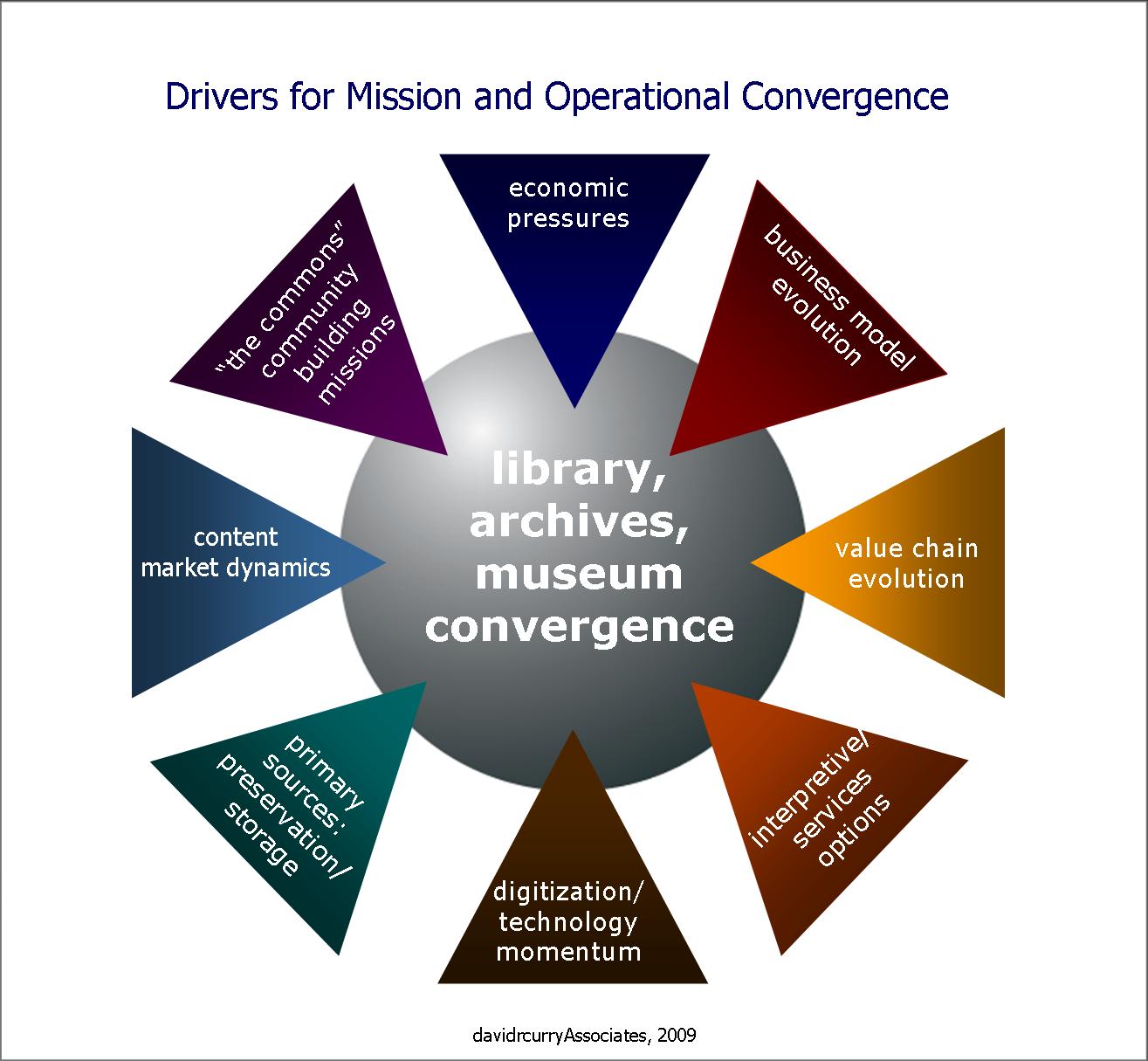
The IMLS wiki UpNext kicked off last week looking at changing roles of museums and libraries as they adapt to the changing needs of their communities. The latest discussion focuses on shifts in power–are museums evolving into facilitators and networks for information, rather than gatekeepers? In the spirit of this ongoing exploration, I’ve invited David R. Curry, managing principal of davidrcurryAssociates, to contribute his thoughts of the future of libraries, archives and museums.
David brings an interesting perspective to this discussion, as he has his Master’s of Science in Library Science, and has been involved in the library, archives, and museum fields through most of his career. He’s served as an board officer, trustee or director of organizations as varied as The Franklin Institute Science Museum (Philadelphia), the Philadelphia Liberty Medal, Detroit Symphony Orchestra, Arts Midwest, The Arts Foundation of Michigan, Friends of Detroit Public Library, and the Michigan Center for the Book. David thinks that libraries, museums and archives will converge in the future, blurring boundaries as they adapt to the forces shaping them. Here’s his reasoning behind this conclusion:
Thinking About Convergence Part 1: Drivers
One’s frame of reference can make all the difference in trying to understand complex phenomena, issues or opportunities. The accelerating convergence of libraries, archives, museums, cultural heritage and memory institutions is a good example of such complexity.
The strong and distinct traditions of leadership, professional culture, training, career systems, funding streams, and “issues” within these fields make such convergence, for some, not only challenging to understand as the way forward, but a challenge to those very traditions.
But using a frame of reference external to the field, I see a number of “drivers” – commercial-speak for forces that shape and accelerate trends or direction —
that are fueling such convergence.
The octagonal map and discussion below presents my view of such drivers.
Economic Pressures
Continuing pressures from The Great Recession on federal/state/local government resources, foundations, corporate and private grant-making will mean long-term negative impacts on contributed income for all nonprofits, weakening their near-term fiscal health and long-term sustainability. Responsible board and staff leadership in the LAM (Library, Archives, Museum) community will explore ways to address this reality, including a range of collaborative options involving pooled talent, joint asset management, shared back-office operations and more.
Business Model Evolution
Responding in part to economic pressures, but also recognizing innovation in the nonprofit sector, creative leaders will explore new and new kinds of business models which fold-in strategic alliances, shared services, virtual operations models and merger/acquisitions. In this evolutionary period one important phenomenon is the emergence of “social businesses”—for-profit entities delivering traditionally “nonprofit services” having a range of options as to how operational “surpluses” (when they can be achieved) are applied. LAM leadership might well watch the “incursion” of for-profit entities into the realm of educational services space as they consider how this might affect their fields.
Value Chain Disruption
LAMs are not immune as traditional methods of supply are upended by web-based models, the emergence of brokers and aggregators, and other forms of value chain redefinition. There will be increasing pressure to find scale, invest in innovation, enhance earned income streams, and achieve cost-efficiencies for programming and services delivery. Addressing these imperatives will help fuel convergence.
Interpretive & Services Options
The Internet/Web 2.0 is increasingly the “default” platform for interpretive, curatorial and service design strategies. Whatever an institution does in this realm, and however physical assets and content may be employed, the question about “how this gets delivered on the web” needs to be answered. This common platform momentum will drive a new common skill set requirements and an expansion of audiences served in both sector and geographic terms, fostering convergence along the way.
Digitization and Technology Momentum
The cost-effectiveness and priority of digitization of collections and primary content is redefining acquisitions and programming strategies as well the definition of the audience LAMs serve. The evolution and ubiquity of mobile devices at the global level across economic strata is a “pull” mechanism that the LAM community cannot ignore. Responding to this pull will drive common strategies and integrated techniques to deliver value.
Primary Sources: Preservation/Storage
Demand for access to and leverage of primary sources and collections of all kinds drives the need for common strategies around licensing, intellectual property, copyright management, and associated revenue streams. Just as important, LAMs will have an increasingly common agenda in addressing preservation, access, physical storage, and overall management of primary source content overall, including “born-digital” content.
Content Market Dynamics
The large and economically powerful “commercial” content market, which is perhaps anchored overmuch in entertainment content at the moment, is a key driver (and definer) for market and community expectations. Apple iTunes, Google Books+ and similar disruptions will increasingly “invade” the LAM domain, driving the need for common, robust strategies to deal with the velocity and vectors of change.
The Knowledge Commons and Community-Building Missions
The notion of the “the commons” and community-building as central anchors to mission frameworks is growing, and in some ways is a counterweight to the dynamics of the market for “commercial content.” Activism is growing at a global level (e.g. the A2K “movement,” Convention on Biological Diversity and World Intellectual Property Organization (WIPO) actions), complemented by local, indeed block-level, community building agendas. How LAMs respond and remain relevant will drive common strategies and tactics across institution types.
I hope my view of these “drivers” of convergence makes a contribution to this IMLS wiki discussion (adventure).
Not everyone agrees with this vision of the future–believing instead that museums, libraries and archives will retain distinct identities. Weigh in–do you think David’s forecast is correct? If not, what reasons lie behind the scenario you paint of the world ahead?









Comments